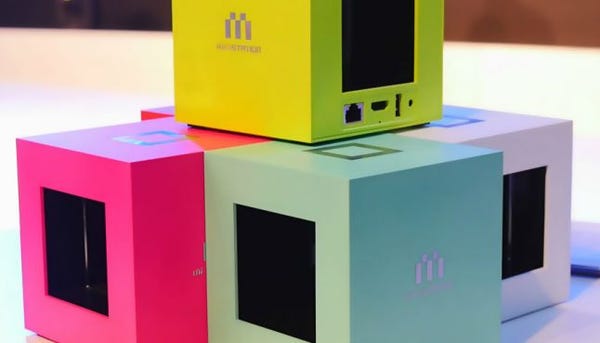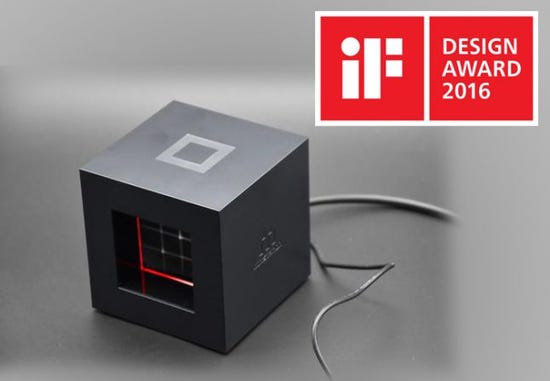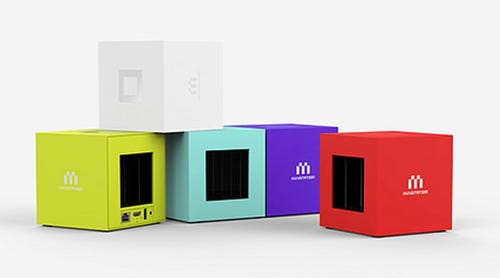
Featured Blog | This community-written post highlights the best of what the game industry has to offer. Read more like it on the Game Developer Blogs or learn how to Submit Your Own Blog Post
Introducing Tencent’s Mini Console
This article introduces Chinese mobile giant Tencent's new mini console. Is Tencent after something big?

 Tencent’s mini console –Ministation was available for sale in China on Dec 23, 2015. A few points makes this launch interesting: The console is presented by the Chinese mobile giant Tencent, not by some start-up or Kickstarter; And the timing, it was just a few months after the official discontinuation of OUYA; And in such a market where consoles don’t have good reception.
Tencent’s mini console –Ministation was available for sale in China on Dec 23, 2015. A few points makes this launch interesting: The console is presented by the Chinese mobile giant Tencent, not by some start-up or Kickstarter; And the timing, it was just a few months after the official discontinuation of OUYA; And in such a market where consoles don’t have good reception.
Here I would like to introduce to you the features of this new console, it would be funning to look into the device and Tencent’s ambition.
In A Word
This is a console which enables you to play mobile games on the big screen of TV set, using your mobile phone as the controller.
Appearance

It’s a small cube, with a seeing through window in the middle. The colors of the coating have many choices.

And while turn on, the light streaks inside add to its Tron feeling. By its unique design, Ministation wins the iF Design Award 2016.
System
The system is dubbed TOS (Tencent OS). It’s essentially an Android system, running Android games. You can download games only from Tencent’s build-in shop.
Launch Games
All the launch games are already available on mobile for a while, and now they are ported to TOS system.
Here are a few launch games, you can see that there are many famous 3rd parties, including Gameloft and Chair.

Price and Graphics
Currently one unit is sold for ¥699 (around $106). It’s easy to see, for this price it’s not a next-gen console. And the graphic quality is a bit less than PS3.

Control
The package only gives you a console body, and cables (Power, HDMI) , no controllers. You operate the console and play games by your phone, both Android and iOS phones are supported. Of course you should first download Ministation App to your phone.

While playing a game, the game displays on your phone, and you touch the screen to play. No difference from playing a regular mobile game. Only that the game is synched to the TV set, that you can enjoy the visual impact traditional console games should offer.
Please note, while there’re already many products which are able to project your mobile screen to TV set. Ministation is different, the games are downloaded to the console and run by the console, not by the phone.
And the control is not very intuitive. Consider playing a mobile game by virtual buttons, for example Adventures of Pip. You need to stare at the buttons all the time, for your fingers can’t feel them, you need to know where your fingers go; And think about playing PS3, you don’t need to stare at the controller, for your fingers can feel. So here’s the catch, while playing Ministation, you keep eyes on the TV set, and your fingers couldn’t feel physical buttons –the players need to first learn to ADAPT to this control.
Consoles in China
In the last decade, there is a vacuum of consoles in China, albeit a small group of gamers play smuggled consoles. The most popular games in China are MMO games on PC, and mobile games. And top 10 grossing mobile games are mostly RPG and MOBA games for the last two years:

(Above: Top grossing game 2015: Dreamy Chinese Odyssey梦幻西游)
Few gamers would seriously consider buying a dedicated gaming machine.
Tencent’s Ambition
If this console is presented by someone else, I believe few people would give it very high expectation of its future. We already have the OUYA story, and Chinese market is not a fertilized ground for console games, yet.
I can’t tell for sure, but I can feel it. Tencent is powerful and has smart team, it wouldn’t make uncalculated move. I think Tencent is after something big. And what is that? My dear readers, you are all industry people more experienced than me, from the clues I provided in this article, I’m sure you can tell me something?
If you like this post, please see more of my articles and follow me here...
I would post regularly--one article every two weeks, about game and art production.
Read more about:
Featured BlogsAbout the Author(s)
You May Also Like







.jpeg?width=700&auto=webp&quality=80&disable=upscale)








